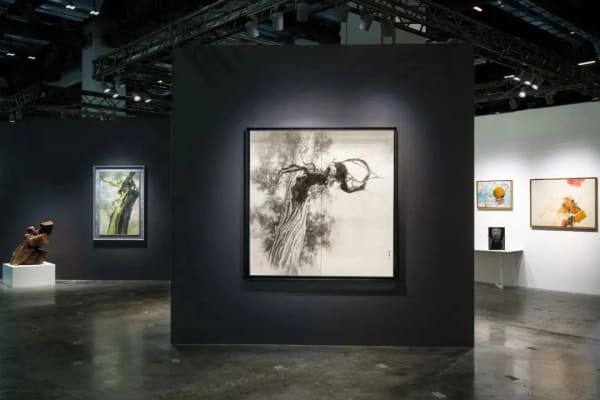Guo Cheng Dong 郭成東 b. 1975
Currently based in Paris, Guo Chengdong (b. 1975, Shenyang, China) integrates the depth of Eastern craftsmanship with the expressive vocabulary of Western contemporary art. His practice delves into the spatial, material, and temporal dimensions of sculpture, offering nuanced reflections on the relationship between body, environment, and material.
Trained in figurative sculpture and jade carving in China, Guo laid a strong technical foundation early in his career. After moving to Paris in 2002, he embraced experimental practices, such as large-scale installations and conceptual dialogues with the works of Marcel Duchamp. While he continues to pursue the intrinsic language of sculpture, his work transcends the cold formalism of Western minimalism by infusing philosophical inquiries into human condition, society and nature, imbuing his sculptures with narrative depth and spiritual resonance.
Guo was awarded the “Tony Stone Award” by the Society of Portrait Sculptors in the UK (2022) and the Special Jury Prize at the 9th Rambouillet Biennial of Animal Sculpture. In 2020, he was commissioned by the Chu Teh-Chun Foundation to create a life-sized bronze sculpture of the artist to commemorate Chu’s centenary. His works have been exhibited at major institutions in France, Germany, and Belgium, including the Musée Cernuschi, Musée National de la Marine, and the Grand Palais in Paris.
-

Booth 3E09 | Art Basel Hong Kong 2025
26 - 30 Mar 2025Kwai Fung Hin Art Gallery is delighted to participate in Art Basel Hong Kong 2025, presenting an extensive selection of works that bridges continents, eras,...Read more -

Booth BD07 | ART SG 2025
16 - 19 Jan 2025Kwai Fung Hin Art Gallery is excited to participate in Art SG for the third consecutive year, showcasing a highly anticipated collection of artworks. This...Read more
